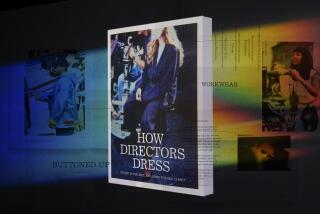Intentions get lost when designers aren’t credited

Thank you for your comments on design authorship [“Credit Where It’s Due” by Christopher Hawthorne, Sept. 11]. While architecture is, admittedly, a collaborative venture, the failure to identify the principal designer cuts off any dialogue with critics and historians to discuss the design intentions as well as the objectives and constraints of a project. In the case of Capitol Records, for example, as you know this resulted in all the nonsense about the design being based on a “stack of records.” My real concern was, beyond all the other project imperatives, to respond to the needs of the voiceless “client,” the inhabitants of the building. To me this meant a building that was light, approachable and lively.
My father designed and made women’s clothes. I happened to be in his shop when a woman had just put on her new suit. “Oh, you make such beautiful clothes,” she said. My father looked offended. “I don’t make beautiful clothes,” he said. “I make clothes women feel beautiful in.” It’s a distinction that has influenced all my work.
Lou Naidorf
Santa Rosa
Silence is golden in film dialogue
I found Steven Zeitchik’s article on the theory of “less is more” when it comes to movie dialogue most persuasive [“Giving Films the Silent Treatment,” Sept. 24]. I am compelled to add Rod Steiger’s searingly silent portrayal in the the final scene of “The Pawnbroker.” an entirely new level of pain and emotional anguish had been achieved that set the stage for the coming age of reality filmmakers, moving movies from the mostly popcorn entertainment of the ‘50s and early ‘60s forward to the films of the late ‘60s and early ‘70s, where the sense of reality returned to the medium.
Mark W. McCreary
Monrovia
The Emmy field isn’t nearly level
Regarding Emmy award coverage [Sept. 11]: Each year the HBOs, Showtimes and assorted cable networks dominate both the nominations and the awards. There is a significant difference between over-the-air TV on one side and pay and cable on the other. If NBC aired one episode of “Game of Thrones,” “Ray Donovan,” “Veep,” “House of Cards,” etc., the FCC would levy a six-figure penalty on the affiliate stations that broadcast it.
John E. Goldhammer
North Hills
It’s a concert; focus on music
Your critics were at the Harry Styles show to comment on the music [“Adults Go See Harry Styles” by Mikael Wood and Amy Kaufman, Sept. 22], but that’s not at all what they ended up commenting on, and I think that’s exactly what’s wrong with this world today. Instead they bashed the guy on anything they could think of, even criticizing him for being too nice.
Lauren McNamara
Ramsey, Minn.
Gender parity is in order here
Concerning the return of the “Will & Grace” TV show [“They Can Go Home Again” by Yvonne Villarreal, Sept. 24]: If they really wanted to be progressive, they would call the new show “Grace & Will.”
Meta Davidson
Thousand Oaks
Nice tune played in the writing
Great article on Steve Martin [“Serious Fun for Steve Martin” by Randy Lewis, Sept. 20]. Like a banjo tune, it had a nice little cadence. Well done.
Greg Root
Oceanside
Kennedy’s plan for Vietnam
Re: “The War That Won’t Let Us Go” by Robert Lloyd, Sept. 16. Despite the program’s excellence, I am mystified by Ken Burns’ slanting of the historical record in an effort to show President Kennedy’s ambivalence about Vietnam.
By November 1963, Kennedy had no such uncertainty. A grand total of 47 U.S. advisors were killed there during Kennedy’s presidency. Despite immense pressure from the Pentagon, he refused to send combat troops there, just as he had refused to send them to Laos, Berlin and Cuba. Burns quoted Kennedy as saying, “If we withdraw, we will lose the election.” In fact, Kennedy repeatedly confided to an array of his closest aides and political confidantes that he would withdraw all U.S. advisors from Vietnam in January 1965.
Mark E. Kalmansohn
Los Angeles
More to Read
The biggest entertainment stories
Get our big stories about Hollywood, film, television, music, arts, culture and more right in your inbox as soon as they publish.
You may occasionally receive promotional content from the Los Angeles Times.











